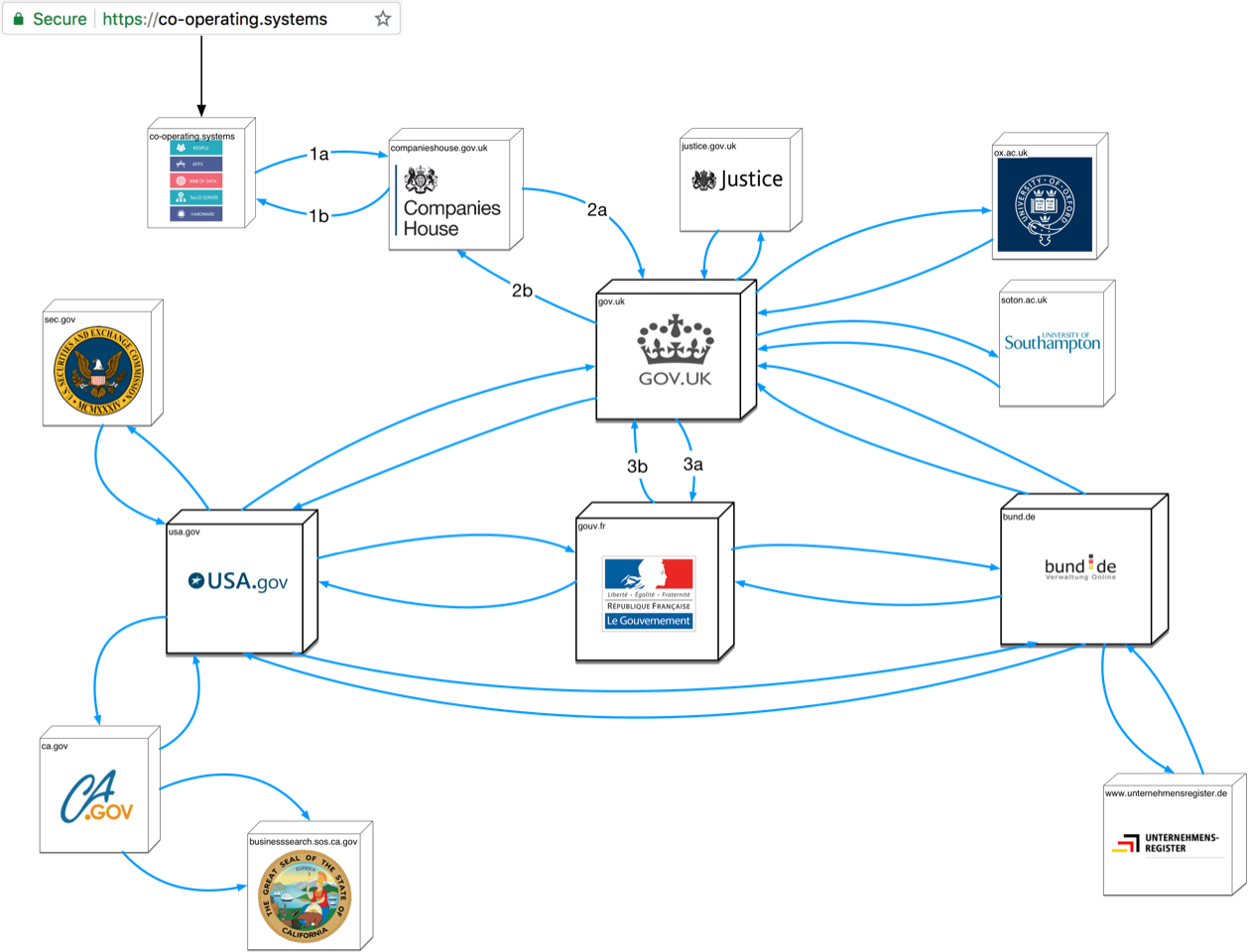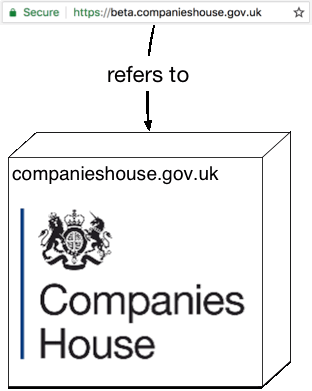- From: Ryan Sleevi <ryan@sleevi.com>
- Date: Thu, 12 Jul 2018 14:04:47 -0500
- To: Henry Story <henry.story@bblfish.net>
- Cc: Dave Crocker <dcrocker@gmail.com>, public-web-security@w3.org, ryan@sleevi.com
- Message-ID: <CAErg=HFvPW0s-47fucdv-uLL3oAR62JrX=4V2phCDhCOwtKY+g@mail.gmail.com>
On Thu, Jul 12, 2018 at 1:09 PM Henry Story <henry.story@bblfish.net> wrote: > > > On 12 Jul 2018, at 19:32, Ryan Sleevi <ryan@sleevi.com> wrote: > > > > On Thu, Jul 12, 2018 at 12:06 PM Henry Story <henry.story@bblfish.net> > wrote: > > > On 12 Jul 2018, at 15:34, Dave Crocker <dcrocker@gmail.com> wrote: > > On 7/12/2018 5:19 AM, Henry Story wrote: > > I have recently written up a proposal on how to stop (https) Phishing, > > > http://craphound.com/spamsolutions.txt > > originally written for email, but it applies here, too. > > > :D > > But, not really: The architectural difference between the web and e-mail > are very > big. Furthermore the problems looked at are completely different: that > questionnaire > is for spam, and this is a proposal against phishing. > > These problems are more similar than different, and what Dave linked to is > just as applicable. They share complex social and political issues, and > technologists that ignore that are no doubt likely to be ignored. > > > Except that I am not ignoring them. > The subtitle of the post "a complete socio/technical answer" points at > that. > Sure, but a subtitle without actual substance doesn’t make for a solution. I encourage you to read through that template again, and reconsider whether or not the problems are really as completely different as you suggest. While I’m aware you suggest you’re just kicking tires, the design itself is neither new nor novel, and every suggested implementation approach has suffered from those flaws mentioned - including this. Then the type of solution I provide is very unlikely to have ever been > thought of pre-web, given the type of technologies involved. Also I have > spoken to people from Symantec and presented this at the cybersecurity > Southampton reading group, and so it has had some initial tyre > kicking already. > > Given the lack of familiarity with Gutmann’s work, which in many ways has > served as a basic reader into the PKI space, I would be careful about > speculating about what ideas may or may not have been considered. > > > I actually refer to Gutmans 2014 book in the answer on UI here > > https://medium.com/@bblfish/response-to-remarks-on-phishing-article-c59d018324fe#1a75 > Yes, while also acknowledging you devised your solution without having been familiar with those who went before and have thoroughly shown the issues with it. It would definitely be useful to read more about it, as well as the background literature around PKI user design to understand why this is not just a matter of no one having thought of it, but rather having been fairly discredited. <https://medium.com/@bblfish/response-to-remarks-on-phishing-article-c59d018324fe#1a75> > > Similarly, given that Symantec has left the PKI business after a series of > failures, it’s unclear if you’re speaking of the current entity or the > former. > > > I just said I have kicked the tires a bit, not that it has gone through a > full review. > The Spamsolution questionnaire would make sense as a first mail to send > someone who > had not thought about the problem at all, as an incentive to get them to > kick the tires. > Dave Crocker does not know me, nor if I did some initial work on the > topic, > so I am ok that he sent it out. It's quite funny actually. > > > The question of an interrelated distributed set of links - and of > authority for different name spaces - is not new or original in this space. > It’s true whether you look at the Web of Trust or when you consider the > PKI’s support for mesh overlays with expressions of degrees of > reciprocality of trust. > > Similar, the suggestion of recognizing the different “organs”, as you > suggest, for different degrees of validation is also not new. You can see > this from the beginning of the X.509 discussions, in which ITU-T would > maintain a common naming directory from which you could further express > these links in a lightweight, distributed directory access protocol. > > > Well there has been a lot of progress in decentralised data since ldap > which is a pre-web > technology that dates back to the 1980ies. But you are right a good thesis > would need to > look at what the advances in this field of linked data have been and why > things could not > be done then that can be done now. > > > There is, underneath it all, a flawed premise resting on the idea that > X.509 is even relevant to this, but that criticism could easily occupy its > own voluminous email detailing the ways in which certificates are not the > solution here. The basic premise - that what we need is more information to > present to users - is itself critically and irredeemably flawed. > > > X509 is not necessary at all to my argument. It is relevant only insofar > as X509 certificates are currently deployed in the browser. You could move > to RFC 6698 (DNS-based Authentication of Named Entities (DANE)) and you > would have the same problem, which is that all you would know > about a server is that you have connected to it. Ie you just know this: > > > > > But what people in the real world need to know is the full web of > relations > that site has to legal institutions they can go to if they want to lodge a > complaint. > This is a flawed premise though. Certainly, if you’re talking to CAs wishing to sell EV certificates, they would be inclined to tell you that, but this is something that’s been fairly plumbed in the spam side. There’s a whole host of problems with this - ranging from the Web’s distributed nature (one bad JS can compromise you), it’s ephemerality (are you going to record every certificate you encountered in a transaction), it’s jurisdictional independence (what happens if Tonga says phishing isn’t a problem? You’re either trying to find political solutions or technical, and both are deeply flawed in this). While you suggest it’s not dependent on X.509, the entire proposal is devoted to discussing this and its relationship to EV. If your goal is merely to provide a federated identity clearing house, well, that’s been explored to - in the context of eIDAS or things like Microsoft’s Passport/Identity Cards. And this does nothing to solve phishing, compare to real technical solutions (like U2F/FIDO or password managers). Is all of this information to be presented to the user before entering any data? If so, it might just surpass Gimp as the least usable software ever. Is it to be recorded for the years until a user for sure isn’t going to lodge a complaint? If so, it’s a privacy disaster. It further tries to enmesh the notion of legal identity as a precursor to a domain or website. While the copyright lobby has been trying to do that for decades - hence the odd ICANN policies - there are legitimate social and technical reasons that anonymity is to be valued. And if the premise is that identity defeats phishing, then either you can’t have anonymity, or you need to thoroughly penalize it, yet both are problematic. It may be that you’ve considered these things, but given the design’s similarities to past designs that failed to do so, it’s unclear if they’re being ignored, they were unfamiliar, or if there’s somehow a missing piece that isn’t documented. It may be helpful to work backwards - work from a statement of the problem and what the desired end result is for how users or “systems” will solve it, before trying to design those intermediate steps. Working through those real world cases will reveal a host of issues - like those mentioned in Dave’s Earlier message - that are far more difficult to solve than just hand waving distributed federation as a solution. > > > > > > Philosophically the answer presented is very different too. You can see > that with > the first line of that "questionnaire" > > Your post advocates a > ( ) technical ( ) legislative ( ) market-based ( ) vigilante > approach to fighting spam. > > The approach here is none of those: it is organological [1], in the sense > that it is > thinking of the problem from an approach that takes the body politic (the > organs of the state), > law, the individual and technology into account as forming a whole that > co-individuates itself. > So to start it does not fit first choice box... > > But you don't need to understand that philosophy to understand the > proposal. You just > have to be open to new possibilities. I > > Henry > http://bblfish.net/ > > [1] There was a conference on this here for example. > > http://criticallegalthinking.com/2014/09/19/general-organology-co-individuation-minds-bodies-social-organisations-techne/ > > > And fwiw, for any UX issue, there is no certitude in the absence of very > specific testing. > > > Yes of course. I do go more carefully into the problem with the https UX > here > > > https://medium.com/@bblfish/response-to-remarks-on-phishing-article-c59d018324fe#1a75 > > I argue there with pictures to go along, that the problem is that there is > not enough information > in X509 certificates for it to make sense to users. Even in EV certs. What > is needed is live > information. > > > > d/ > -- > Dave Crocker > Brandenburg InternetWorking > bbiw.net > > >
Attachments
- image/png attachment: WebOfNations_response.png

- image/gif attachment: CompaniesHouse-urlbar-reference.gif

Received on Thursday, 12 July 2018 19:08:22 UTC